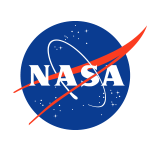STMD Laser Lifetest Program Space Gradiometer
Project Description

Design and initiate lifetest activities on laser transmitter for the Cold Atom Gravity Gradiometer (CAGG) with funding from NASA STMD.
This proposed task is to initiate a path toward space qualifying the laser transmitters for gravity gradiometer. For the Gravity Gradiometer effort, we have prepared a plan to bring the laser systems to TRL6 in a 36 month program. An early start in performing studies in the optical, optomechanical, thermal and electrical systems that are required to mount, operate and inject light into and beam shaping the output beam is paramount in making the TRL-6 plan successful. We will use this IRAD task to begin an extended duration testing of these tapered amplifiers and understand the performance and degradation mechanism.
More »Project Library
Primary U.S. Work Locations and Key Partners
| Organizations Performing Work | Role | Type | Location |
|---|---|---|---|
 Goddard Space Flight Center
(GSFC)
Goddard Space Flight Center
(GSFC)
|
Lead Organization | NASA Center | Greenbelt, Maryland |
Primary U.S. Work Locations
-
Maryland


